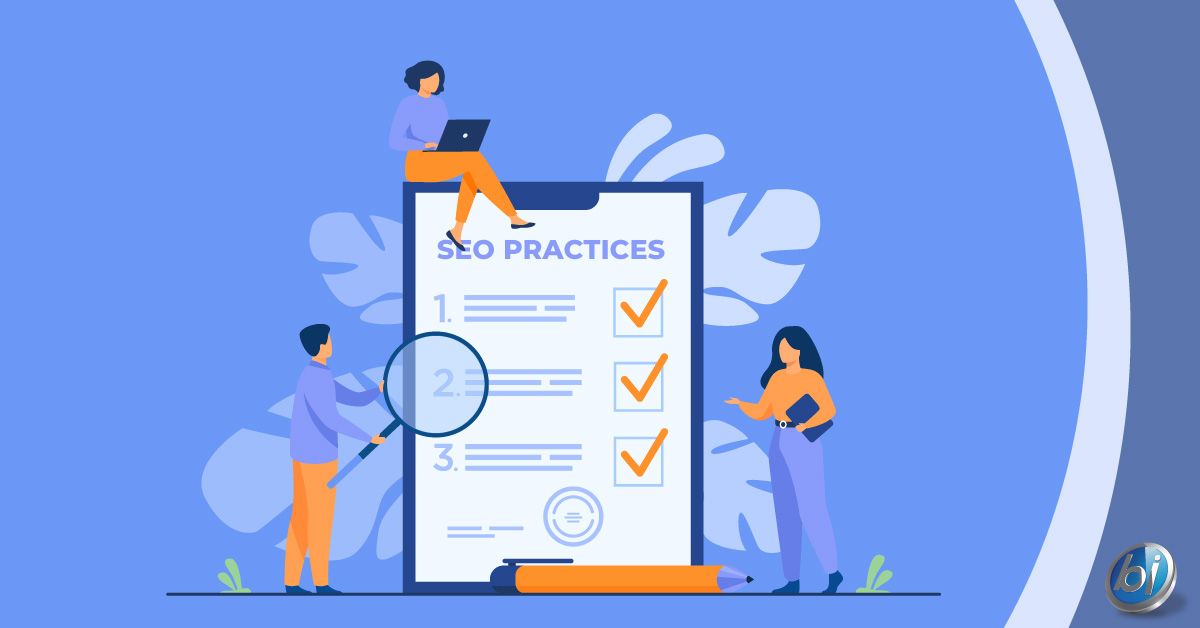The sad truth about SEO marketing is that if you’re not part of the first few companies on Google’s results page, then you won’t get the amount of traffic you want to achieve. According to HubSpot, 75% of users never scroll past the first page of search results. That’s why now more than ever, you must create engaging and educational content that your target audience loves and can share with their peers.
Google continuously develops its algorithms to fit the behavior of its users, ensuring they get the information they are looking for as soon as they click the search button. That’s why you see that Google’s search engine page continues to evolve. With that, websites have to adapt to these changes, updating their website time and time again to keep up with Google’s algorithm.
With this, you might be having a hard time keeping track of all the things you need to do, so you can keep your law firm’s website relevant in the ever-changing online marketing climate. Hence, we give you a list of all the latest SEO practices that you need to implement, so you can improve your ranking on Google’s search results.
SEO Practices You Need to Keep in Mind in 2021
- Enhance Your Website’s User-Experience (UX)
Research conducted by Forrester stated that better UI can raise your website’s conversion rate by 200% and better UX design could boost conversion rates of up to 400%. That’s why enhancing your website’s overall design and usability is crucial to increase traffic and get more of these users to convert into actual paying clients. UX as a whole, and not just organic traffic, will become a big factor in Google’s metrics for ranking websites on their search engine.
According to Google’s Webmaster Central blog published in May 2020, the team has discovered how users prefer sites with a great page experience and are working on enhancing their search engine to incorporate page experience metrics.
In May, the Chrome team announced the Core Web Vitals, which is a set of metrics related to speed, responsiveness, and visual stability, helping site owners measure the UX on the web. Now, the team is working on combining this with their existing signals for page experience to improve the search engine’s personalization feature for users.
Hence, now, more than ever, it’s crucial that your high-converting website should meet the following criteria:
- User-friendly design that allows your users to easily navigate through your website
- High loading speeds (you can check out our previous article about fast-loading websites)
- Responsive across all devices and platforms, especially mobile devices
- Free of full-screen pop-ups that could disrupt the user’s experience; according to research, 64% of users find pop-up ads annoying and intrusive. Hence, they resort to installing an ad blocker plug-in to keep them away.
Overall, your website is your potential client’s first impression of your law firm. At the same time, it boosts your customer service. So, you must pay particular attention to ensuring that your website offers users an optimal user experience.
- Create Content That Aligns with Search Intent
You might be wondering first, “what is search intent?” Search intent is the purpose as to why the user is using the search engine. With Google RankBrain and Google Hummingbird, Google’s search engine can interpret search intent and provide results that meet their users’ goals, typically through Anser Box and Knowledge Panel.
Google’s number one priority when coming up with its ranking on search result pages is to find the most relevant websites that meet the user’s search intent.
So how does Google deem your website relevant to the user’s query or search intent?
Through your website’s content, of course. You might have seen this phrase a lot on online marketing websites, “Content is king.” And it truly is. You need to create unique content that aligns with your user’s search intent.
There are 4 common types of search intent. This includes:
- Information – The end goal of the user is to find specific information.
- Navigation – The user is finding a specific website that can meet their specific needs
- Purchase – The user is planning to buy something
- Commercial – The user is still researching a product or service for future use
When coming up with content for your website, you also need to think about keyword intent.

Keyword intent is the words people type on search engines to find what they are looking for (their intent). When you create content for your website, especially blogs, finding the right keywords to insert into the paragraphs helps in boosting your website’s search ranking. This is where keyword research comes in handy.
Keyword research is when you come up with an extensive list of keywords you would like your website to rank for. Through keyword research, you determine the search terms your target audience is using to find your website. An example would be “law firm near me” or “bankruptcy law firm in Fairfax VA.”
You need to incorporate these keywords into your written content, so Google can list your website on its search engine results pages. However, when incorporating these keywords, you need to add them seamlessly to your paragraphs, so it does not affect the overall goal of your content. Remember, keywords can help but you want to write for people rather than for search engines.
Google’s metrics value your content’s relevancy to its users more than anything. If you stuff your content with keywords, making it incomprehensible to users, this will increase your bounce rate and affect your search ranking altogether.
The best SEO practice to keep in mind is that you should always have your user’s search intent in mind when creating content for your law firm’s website.
- Create Compelling Title Tags and Meta Descriptions
Your title tag and meta description are sneak peeks at your content. That’s why you have to create eye-catching and relevant headlines and summaries.
- Why Your Title Tag Is One of the Most Crucial Factors in SEO
These are the clickable headlines that appear on search results. According to Google, your title tag is crucial in acquiring traffic as it gives your target audience a quick insight into your content to determine if it’s relevant to their query. Often, it’s the primary piece of information they use to choose which website to click on. Hence, you must be particular in constructing your titles.
Here are a few tips in creating your titles as provided by Google:
- Your titles should be descriptive and concise
- Include a keyword but avoid keyword stuffing
- Avoid repeating titles for your web pages or using boilerplate titles, like “Law Firm – bankruptcy, identity theft, and credit report issues”
- Your Meta Description Is Second to Your Title
Your meta description is a brief description of your webpage and elaborates more on your title. Though it does not directly impact your search rankings, it still plays a factor in your click-through rates.
Typically, Google allows 155-160 characters of text for meta descriptions. Hence, you need to provide a brief yet accurate summary of your content for users to see.
When creating your meta description, here’s what you need to keep in mind:
- All your web pages must have meta descriptions.
- Each of your meta descriptions should be unique.
- Have meta descriptions in the active voice.
- Include target keywords but do not stuff it with keywords.
- Make your descriptions match search intent.
- Optimize Content for Voice Search
Voice search has become increasingly popular, especially for mobile users. Google reports stated that currently, 27% of the global online population is using voice search on mobile. And experts say that it is expected to grow in the near future. With Google and other devices improving their automatic speech recognition system, companies are now updating their websites to be more voice-search ready.
What you need to know about voice search is that usually, they pick the top 3 websites that are ranked high by their search engine. According to BACKLINKO, 38.29% of the time, the top 3 websites on Google search results are given as voice search answers. With this, you need to create content that will align with the automatic speech recognition system.
What’s the difference between voice search and traditional search?
Voice search tends to be more conversational rather than using a couple of keywords. If you’ve noticed from voice technology, like Alexa and Siri, they respond in a conversational or more personal way to the user. This is because Voice Search is an advanced and improved dialogue system. This means it uses different modes of communication, like text and speech, among others, to know what you need, search for it on the Internet, and give you relevant answers to your queries.
So how do you make your website more voice search ready?
You must include questions and answers in your content. With this, FAQ pages can come in handy. They have question keywords that are often included in voice searches. They also include filler words that often come up in dialogues. Long-tail keywords can also be used in your FAQ pages to further improve your ranking in search results.
Is your website voice search ready? If it isn’t, then you should get to work on developing your content into becoming visible to voice technology, so you can be a step ahead of your competitors.
- Use Google My Business for Local SEO
Being a law firm within a certain area, it’s important to be visible for local searches. When your target audience searches for “bankruptcy lawyer in Fairfax VA,” you’d want to be on Google’s listing section, better yet one of the top 3 names on the section. Google My Business is Google’s very own listing feature that allows businesses to add their business information, let customers review services or products, and even book appointments, among others.
If you want to optimize your law firm’s visibility on Google My Business, you need to consider your target audience’s local search experience. One integral part of the local search experience is providing your practice’s complete information on the listing. That way, your target audience can have all the important information they need to make a decision.
- Use Internal Linking
Internal links help users and search engines navigate through your website. These are any links that are found on the page that brings you from one page to another. Having internal links on your webpage is important because it helps Google discover content on your website and rank them on search results. If a post or page has a lot of links, then this signals Google to identify your content as a high-value article.
When you set up your internal linking strategy, you need to make sure that Google can understand the relevance of the page, the relationship between pages, and their value. The best way to do this is the following:
- Come up with the ideal structure for your website
- Decide what content you want to showcase to your target audience the most
- Add contextual links. If you’ve written related articles, then add the link to your previous article to the content. One example would be the one we provided previously in our Google My Business section.
- Have a related post section. You can use plugins and modules that add complete related posts sections to your blog page.
Know that when you structure your internal links effectively, it could significantly boost your rankings in search results. Another great practice for SEO is to add internal links from top-ranking pages to pages that don’t have as much traffic. Make sure to also run site audits to monitor if there are any broken links.
- Get More Authoritative Backlinks
When a webpage links to another page from a different website, this is what you call a backlink. Backlinks are a major factor in Google’s algorithm and it holds for other search engines. When you have a high number of backlinks then you will be ranked high on organic search rankings.
So why are backlinks important? This is because when another website uses your content for their content as well, it signals Google that your content is useful, credible, and relevant.
However, not all backlinks are helpful. Some backlinks can derail your ranking on Google’s search results. That’s why you should focus on getting quality backlinks, meaning quality links from trusted sources, rather than backlinks used to manipulate Google’s ranking system.
So how do you get quality backlinks for your content?
- Create high-quality articles that meet your target audience’s needs
- Replicate your competitor’s backlink strategy
- Have a cornerstone article, meaning articles that are related to your services and that you will promote greatly
Wrap Up
Search engine optimization can be tricky in a way that it may take time for your website to rank on search results. However, the practices we’ve offered above can be a great starting point for you to increase your law firm website’s ranking on search results. Although the competition for the top spot can be intense, continuous updates on your content and working on ensuring your target audience gets the most out of your website can really give you leg up from your competition.
We understand that the time you exert in ensuring your keep your law firm’s website at the top of search results could be used to help more clients with their legal need. Therefore, if you need help in keeping your law firm’s website on top of search results, why not have experts do the work for you?
Get Effective SEO Solutions from Our Team at Binary Ideas
When it comes to search engine optimization, Binary Ideas has helped numerous clients in improving their online visibility on search engines, helping them increase their website traffic, and yes, even increase their clients or patients. Our SEO team is up-to-date with the latest strategies and practices that will boost your website’s search engine ranking, and make it an authoritative, reliable website among its competitors.
If you don’t have a website yet, our design and web development team can create a customized, high-converting website that will boost your law firm’s online visibility and increase your digital footprint. Partner with Binary Ideas, and get effective SEO and online marketing solutions today!








